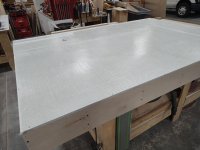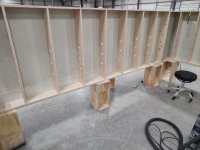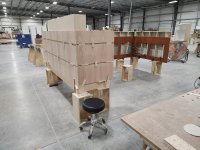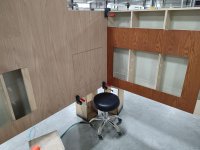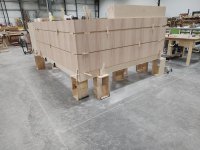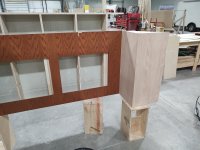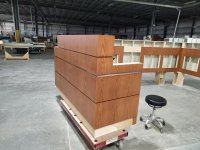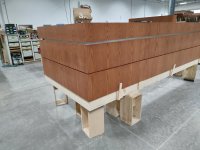Crazyraceguy
Member
- Joined
- Oct 16, 2015
- Messages
- 5,559
There isn't much to see yet, except for the actual fiberglass-like material. Once it is complete, you will never know it is even in there. It gets covered by a layer of 3/4" ply and some veneered panels on top of that. It's fairly big, but has to deliver through a pretty small doorway, so the field joints are not in ideal locations. That's just the way it has to be sometimes.
Level 3 protection is supposed to withstand a .44 Mag
This is just day one's progress, there will be more next week.
I had to buy the cement-board saw blade for this stuff. It is basically fiberglass and doesn't take to well to being sawn. It can be drilled pretty easily, with normal HSS bits. I made the first few saw cuts with the TCG blade that I have for Corian. It actually doesn't do that bad, especially after I figured out that slowing the blade to the minimum, helped. When the special blade showed up, I switched over to it.
The amount of force required to push the saw was reduced, but the cut wasn't significantly better, until I thought to speed the saw back up. With only 4 teeth, they need some speed to have more engagement.
That reduced to pushing force even more. It still kind of tears at the top layer of fibers, but the cut is far easier, and they sand right off.
Level 3 protection is supposed to withstand a .44 Mag
This is just day one's progress, there will be more next week.
I had to buy the cement-board saw blade for this stuff. It is basically fiberglass and doesn't take to well to being sawn. It can be drilled pretty easily, with normal HSS bits. I made the first few saw cuts with the TCG blade that I have for Corian. It actually doesn't do that bad, especially after I figured out that slowing the blade to the minimum, helped. When the special blade showed up, I switched over to it.
The amount of force required to push the saw was reduced, but the cut wasn't significantly better, until I thought to speed the saw back up. With only 4 teeth, they need some speed to have more engagement.
That reduced to pushing force even more. It still kind of tears at the top layer of fibers, but the cut is far easier, and they sand right off.

